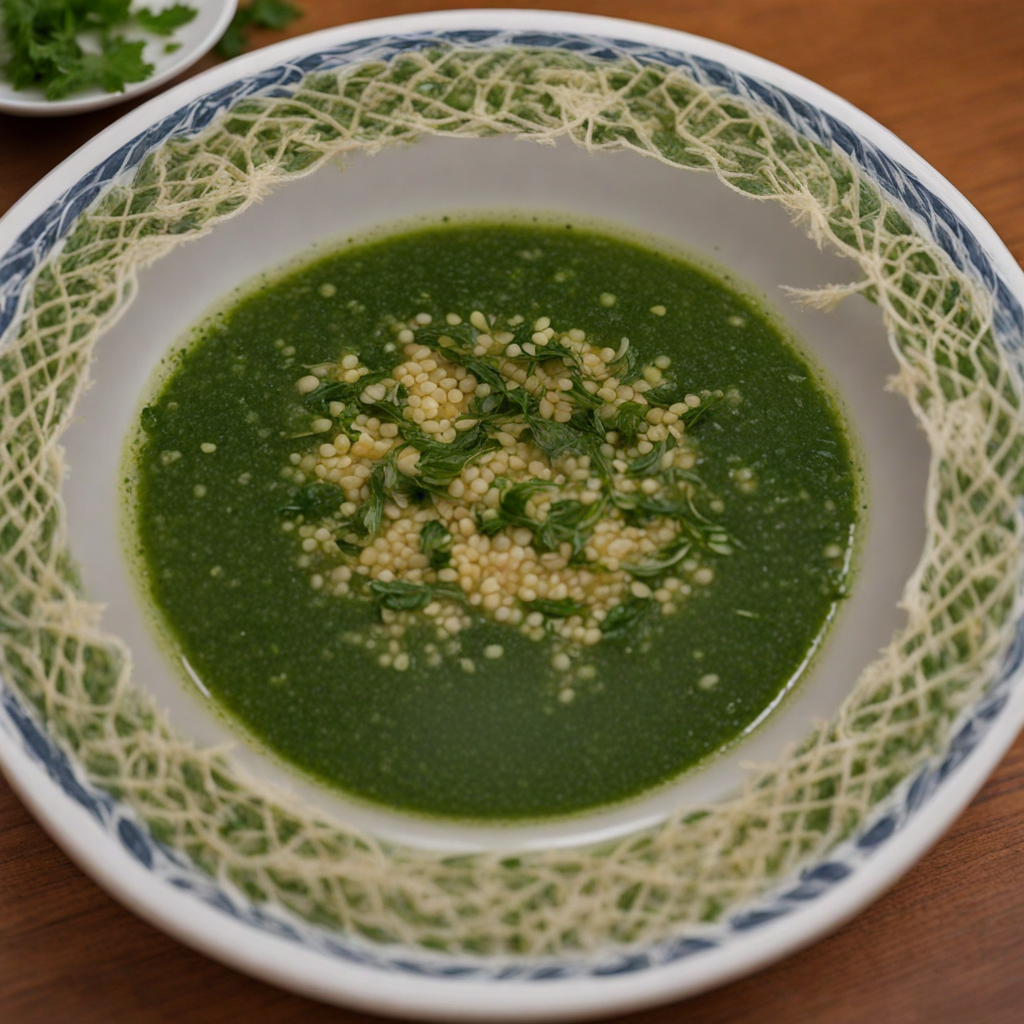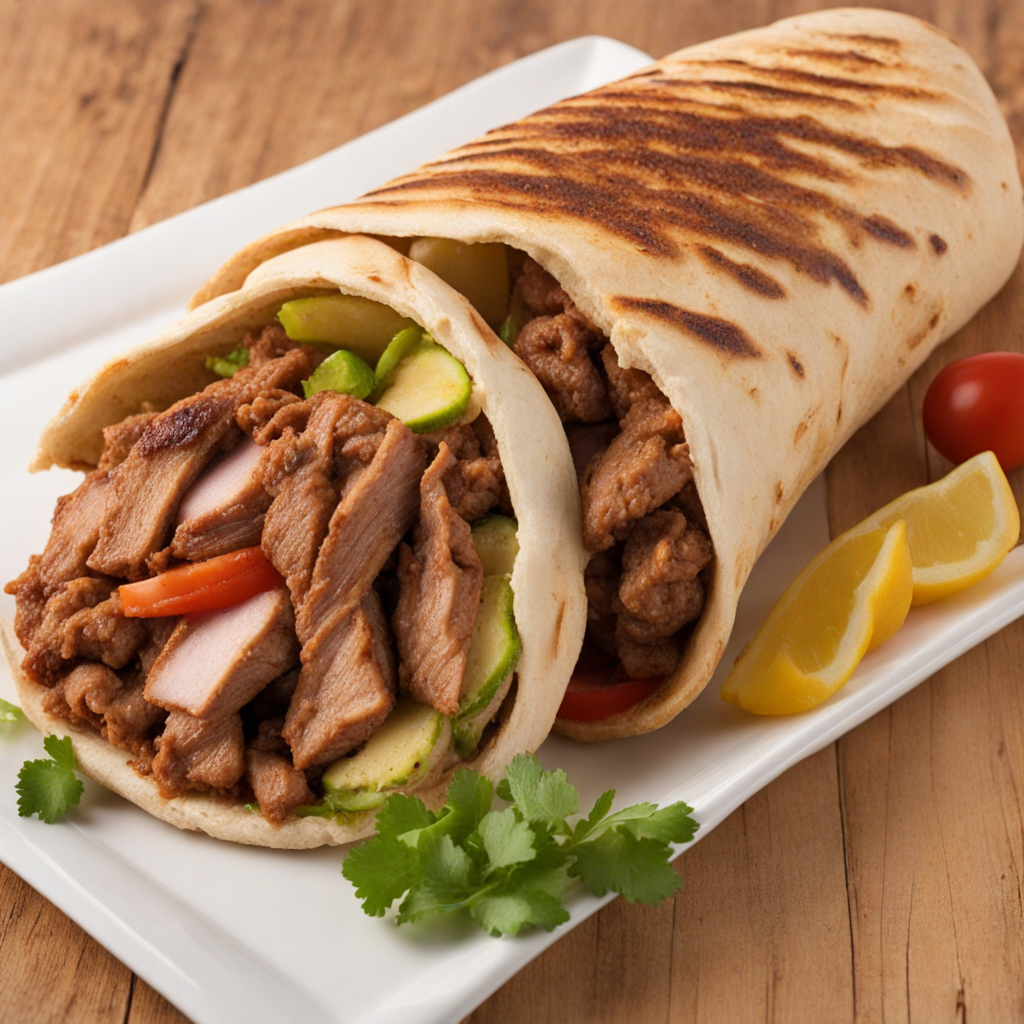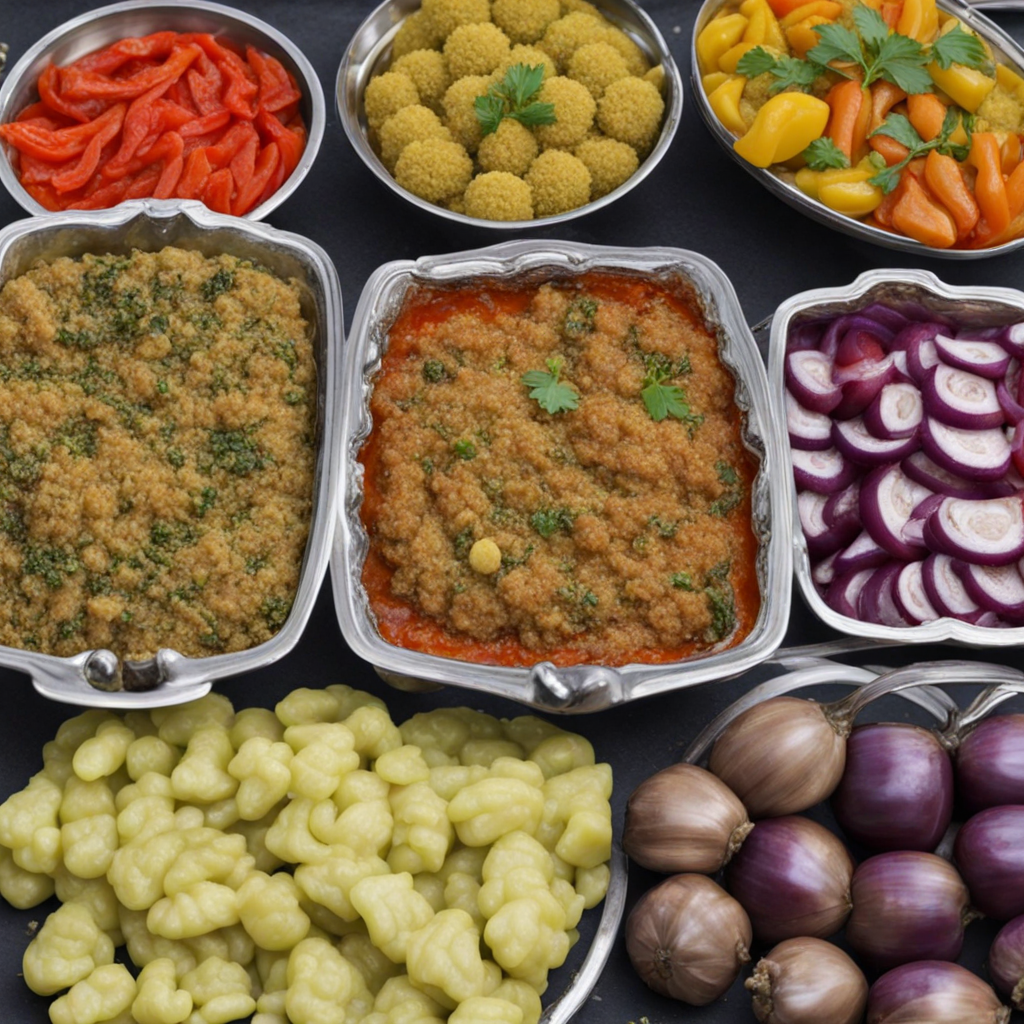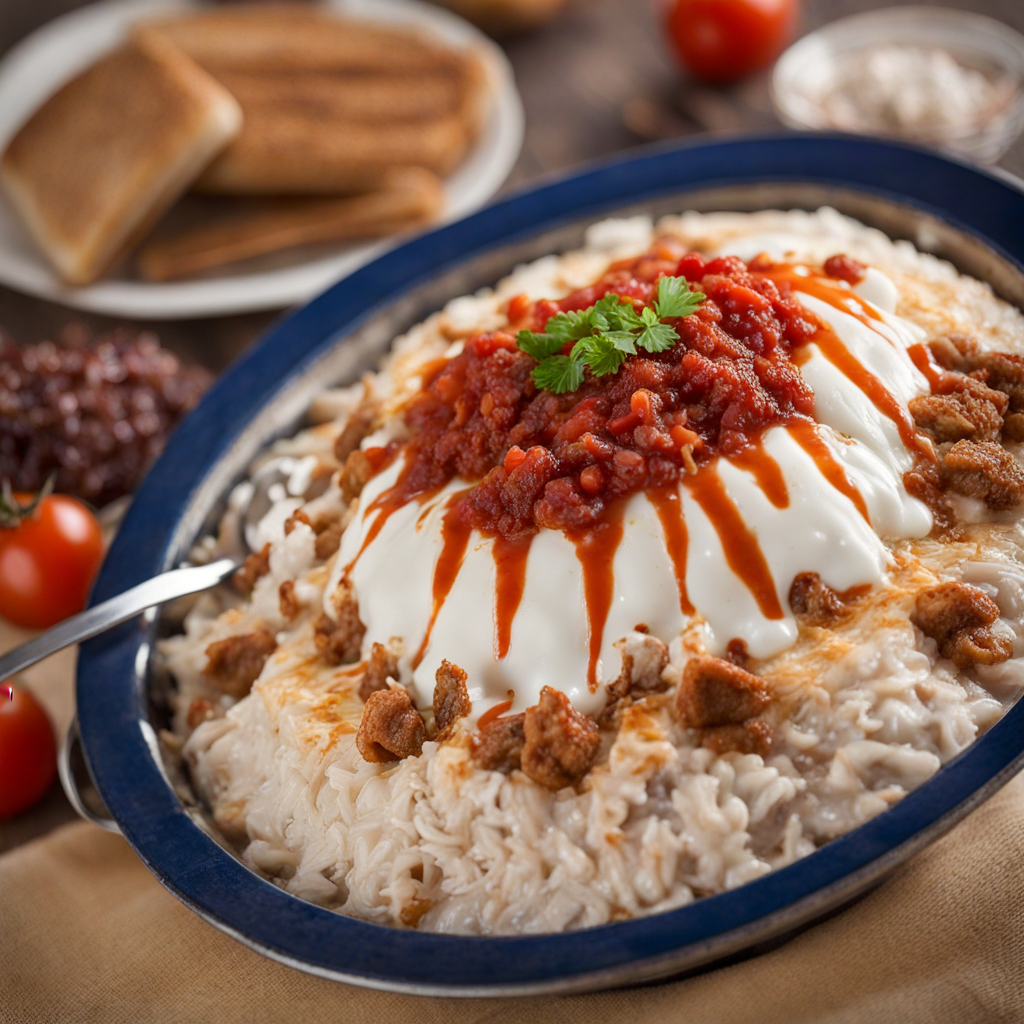Molokhia
Molokhia is a traditional Egyptian dish that showcases the unique flavors and textures of the jute leaf, known locally as molokhia. This vibrant green leafy vegetable is finely chopped and cooked down to create a thick, aromatic stew that is rich in nutrients. The dish is often infused with garlic, coriander, and a touch of lemon juice, which contribute to its deep, savory flavor profile. When prepared, molokhia takes on a slightly mucilaginous texture, reminiscent of okra or certain types of greens, making it both unique and comforting on the palate. In Egypt, molokhia is typically served with a base of rice or accompanied by tender meats such as chicken or rabbit, which have been simmered to perfection. The flavors meld beautifully, with the hearty meat complementing the herbaceous notes of the molokhia. Some variations include a drizzle of chicken broth or the addition of spices, giving it a personalized touch that reflects regional culinary traditions. The dish is often garnished with crispy fried garlic and a sprinkle of fresh cilantro, enhancing its aroma and adding depth to each bite. Despite its straightforward ingredients, molokhia offers a complex taste experience that can be both comforting and exotic. The interplay between the earthiness of the jute leaves and the aromatic seasonings creates a dish that feels both wholesome and indulgent. For those looking to explore Egyptian cuisine, molokhia is a delightful introduction that not only satisfies hunger but also invites curiosity about the rich culinary heritage of Egypt.
How It Became This Dish
The Enigmatic Journey of Mouloukhia: A Culinary Treasure of Egypt Mouloukhia (ملوخية), a dish steeped in rich tradition and history, is more than just a culinary delight in Egypt; it is a symbol of cultural identity and resilience. This green, leafy vegetable, known scientifically as Corchorus olitorius, has found its way into the hearts and kitchens of Egyptians for centuries. Its journey—from ancient origins to modern-day kitchens—reflects the interplay of agriculture, trade, and cultural exchange that characterizes Egypt’s vibrant history. Origins of Mouloukhia The origins of Mouloukhia can be traced back to ancient Egypt, where it held a significant place in the diet and culture of the Egyptian people. The earliest evidence of Mouloukhia dates back to 4000 BCE, where it was cultivated along the fertile banks of the Nile. The plant thrived in Egypt's temperate climate, becoming a staple in the diets of the ancient Egyptians. Mouloukhia’s name itself is derived from the Arabic term "molochia," which is thought to stem from the word "malukhiyah," meaning "royal." This etymological root underscores the esteemed status Mouloukhia held in ancient society. Historical texts suggest that it was considered a food of the nobility and was even served to Pharaohs. The vegetable was so revered that it was often depicted in tomb paintings and inscriptions, signifying its importance in the afterlife. Cultural Significance The cultural significance of Mouloukhia extends beyond its nutritional value. It represents a connection to Egypt’s agricultural heritage and the resilience of its people. Traditionally, Mouloukhia was not just a dish; it was a communal experience. Families would gather to prepare and enjoy the dish together, reinforcing social bonds and cultural identity. Mouloukhia is often associated with various cultural narratives and folklore. It is said that the dish was once a royal delicacy, favored by the Fatimid Caliphate in the 10th century. According to legend, the dish was served to the caliph during a time of famine, and its nourishing qualities ensured survival. This story symbolizes the idea of Mouloukhia as a sustainer during challenging times, further embedding it in the fabric of Egyptian identity. Moreover, Mouloukhia is often prepared during significant cultural events and celebrations, such as weddings and religious holidays. It is common to find families serving Mouloukhia to honor guests, making it a dish synonymous with hospitality. The preparation of Mouloukhia, which involves cooking the leaves into a thick stew often served with rice or bread, has been passed down through generations, preserving family traditions and recipes. Development Over Time The evolution of Mouloukhia is a fascinating reflection of Egypt’s historical trajectory. As trade routes expanded and cultures mingled, the dish began to adapt and transform. While the core ingredient remained the same, the methods of preparation and accompanying flavors evolved. During the time of the Ottoman Empire, Mouloukhia began to take on new dimensions. The Ottomans introduced various spices and cooking techniques, which diversified the flavors of the dish. The addition of garlic, coriander, and even lemon juice became commonplace, enhancing the depth of flavor and making it more appealing to a broader audience. In the modern era, Mouloukhia has seen further transformations, particularly with the advent of globalization. While traditional recipes remain popular, variations have emerged that cater to contemporary tastes and dietary preferences. For instance, some chefs have started to experiment with vegan and gluten-free versions, showcasing Mouloukhia’s versatility. The dish has also traveled beyond Egypt’s borders, becoming popular in other Middle Eastern and North African countries, where it goes by different names and variations. In Lebanon, for example, Mouloukhia is often prepared with chicken or lamb, while in Tunisia, it might be spiced with harissa. This cross-cultural exchange highlights the adaptability of Mouloukhia and its ability to resonate with diverse palates. Nutritional Aspects In addition to its historical and cultural significance, Mouloukhia is celebrated for its nutritional benefits. Rich in vitamins A, C, and K, as well as minerals like calcium and iron, Mouloukhia is a powerhouse of nutrients. It is known for its potential health benefits, including aiding digestion and promoting skin health. This aspect has contributed to its enduring popularity, as health-conscious individuals seek out nutrient-rich foods. Culinary Techniques Preparing Mouloukhia is an art that varies significantly from one region to another and from family to family. The traditional method involves finely chopping the leaves and cooking them slowly with broth, often made from chicken or beef, and seasoned with garlic and spices. The texture is key; the leaves should dissolve into a silky, thick soup that pairs perfectly with rice or bread. In contemporary kitchens, chefs and home cooks alike continue to innovate with Mouloukhia. Some experiment with frying the leaves for a crunchy texture, while others incorporate it into pasta dishes or salads, bridging the gap between traditional Egyptian cuisine and modern culinary practices. Conclusion Mouloukhia is more than just a dish; it is a testament to Egypt’s rich history, cultural heritage, and agricultural legacy. From its ancient origins as a royal delicacy to its modern adaptations in households worldwide, Mouloukhia embodies the spirit of resilience and adaptability. It serves as a reminder of the interconnectedness of cultures and the timeless nature of food as a means of preserving identity and fostering community. As Egypt continues to evolve, Mouloukhia will undoubtedly remain a cherished part of its culinary landscape, a green thread woven into the fabric of its history, culture, and daily life. Whether enjoyed in a bustling café in Cairo or a family gathering in a rural village, Mouloukhia will continue to nourish both the body and the soul for generations to come.
You may like
Discover local flavors from Egypt







